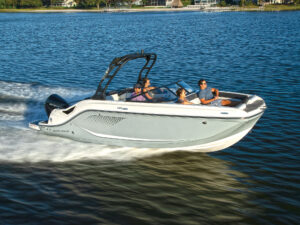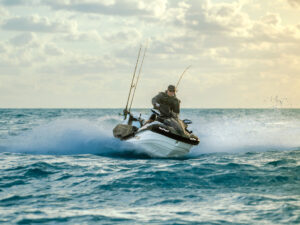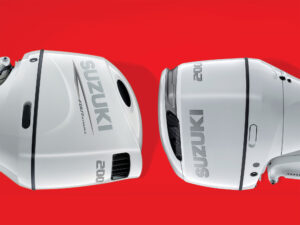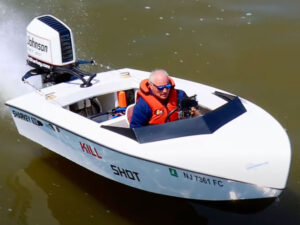Docking beam-to with a stiff breeze blowing you ashore can try the patience and nerves of the most experienced skipper. Reversing doesn’t counter the wind directly, serving only to pull you out of position. The drill is a combination of allowing the boat to drift down while you shuttle between gears, spinning the wheel with each shift in an attempt to stay parallel to the bulkhead or float. Ideally, the bow is upwind a tad so that a final burst of throttle, with the wheel cut toward the dock, provides a soft landing. Current adds another dynamic. It’s demanding, especially for stern-drive cruisers with their relatively high windage, wide beam and shallow draft. And it needs to be practiced. But if your confidence is low, or if you prefer to work smarter instead of harder, consider investing in a system such as Volvo Penta’s stern-drive joystick. In a scenario as described above, I slid a Monterey 320 SCR into place so gently that the tap wouldn’t have cracked an egg.
Overlaying the software that controls Volvo Penta’s IPS tractor drives onto the stern-drive platform – and tweaking the logarithms to account for the different thrust vectors and load characteristics of the propulsion choice – was a shrewd move. It gives the skipper of a boat swinging small wheels mounted aft and close together similar close-quarters maneuverability to that of a vessel with big props mounted forward of the transom. Punch a button, move the ‘stick, and the boat responds on demand. It’s easy, but there are some subtleties. For instance:
Like MerCruiser’s Axius, the wheel becomes disabled when the joystick is engaged, but with Volvo Penta’s system, it also locks in place instead of freewheeling. Should you forget what mode you are in while approaching a crowded landing with the wind howling, this lets you know at a touch that you’re trying to maneuver with a dead control. That’s a good thing, as I had trouble viewing the LED indicators in bright sun.
The drives automatically trim to neutral when the joystick is engaged. This provides the best twisting force, as trimmed-out drives direct much of their thrust upward instead of horizontally while the boat’s off plane. It’s a smart feature and one to be aware of should you be docking in an area where every inch of draft counts. In that situation, so long as you’re trimmed beyond 5 degrees, the drives won’t drop down and spike you in the mud.
The Volvo Penta stern-drive joystick also has two selectable speeds. Both settings max out at about 1,250 rpm, the difference being how quickly the engine is allowed to rev up. Notably, there is less exhaust exiting the prop in the low setting, which explains why I felt like I had a better bite on the water with it, at least in the test conditions I encountered. Volvo Penta’s stern-drive joystick is available as a factory option aboard new twin-engine boats and costs $19,990, which is comparable to the $18,000 to $21,000 upcharge for MerCruiser’s Axius.









